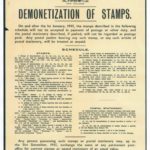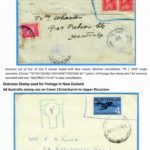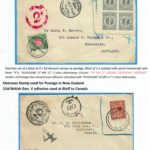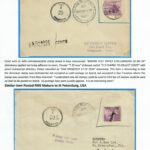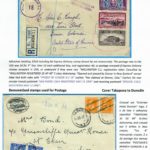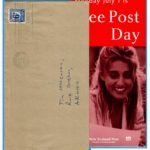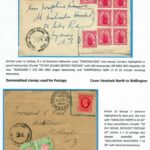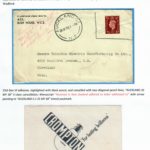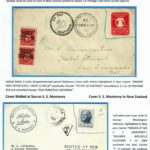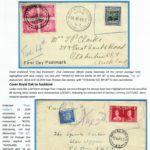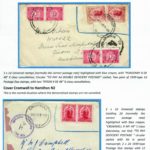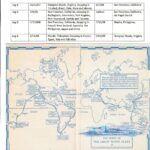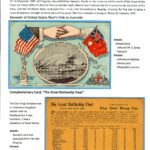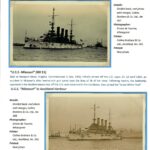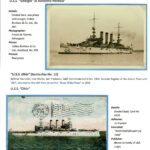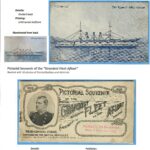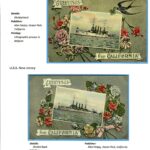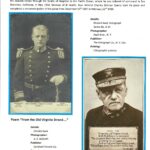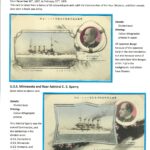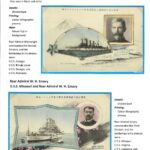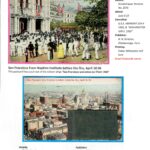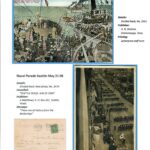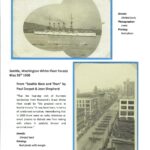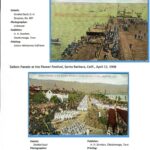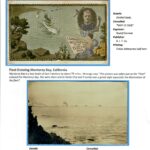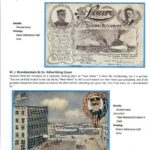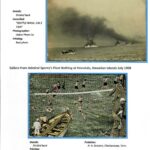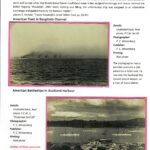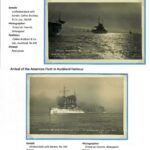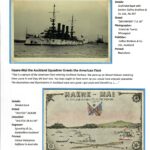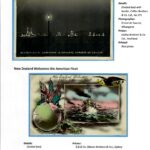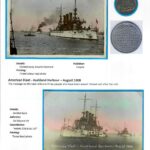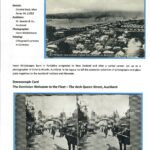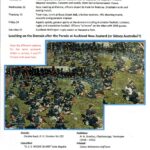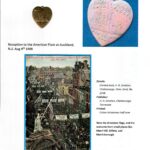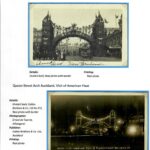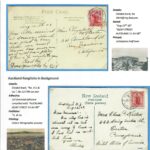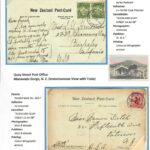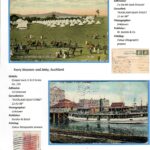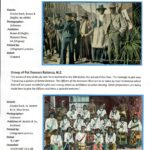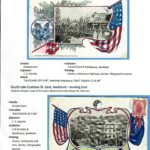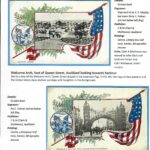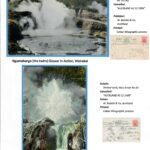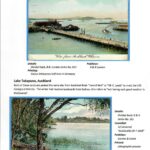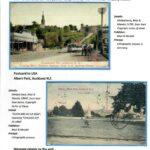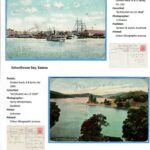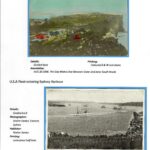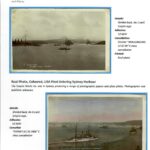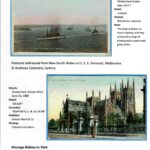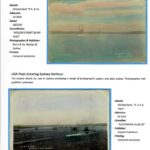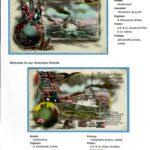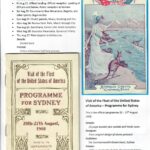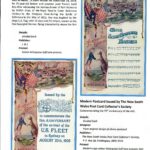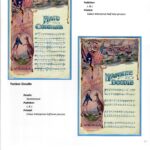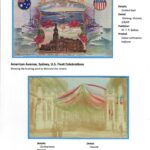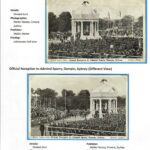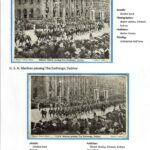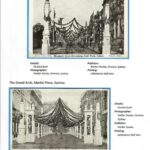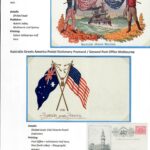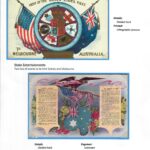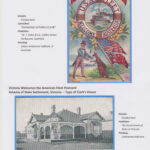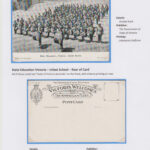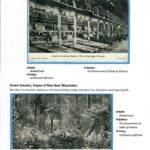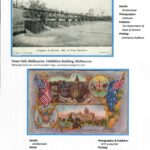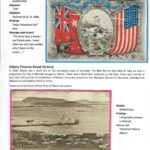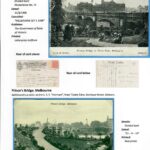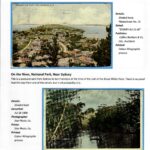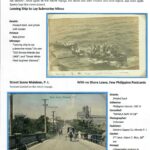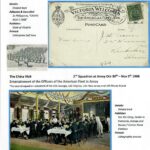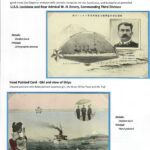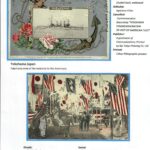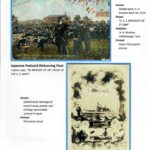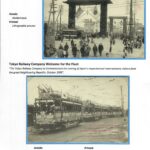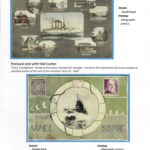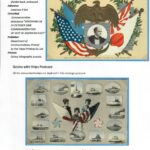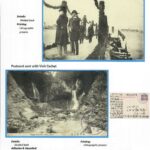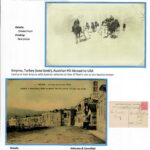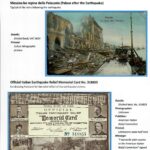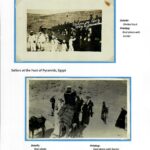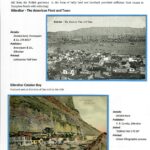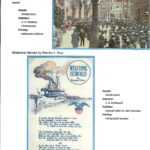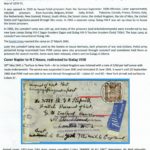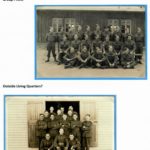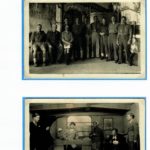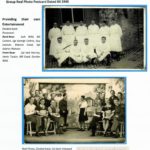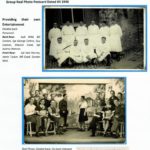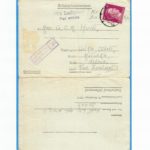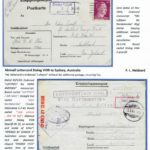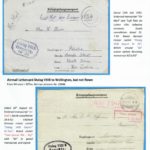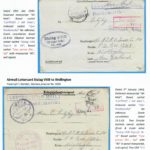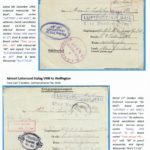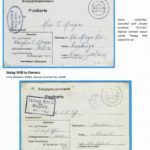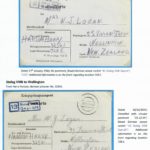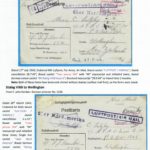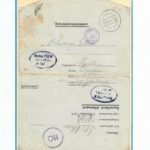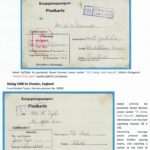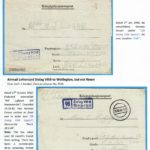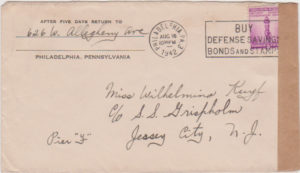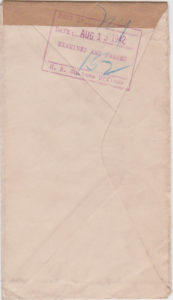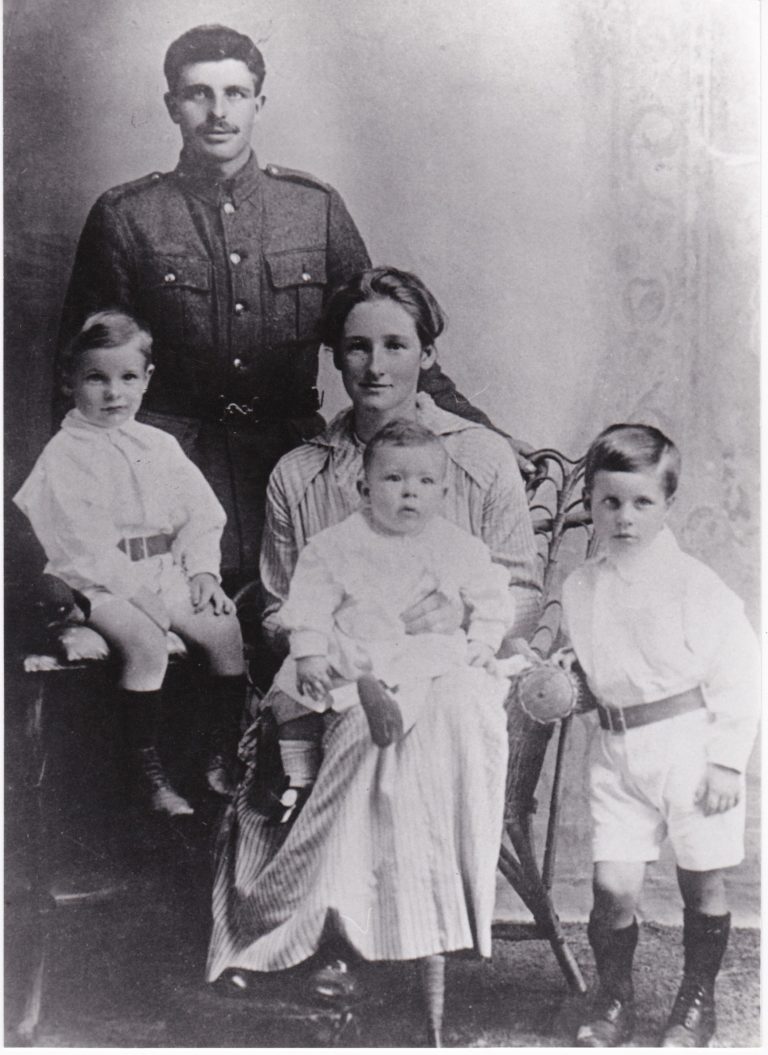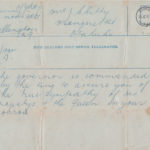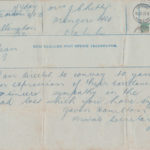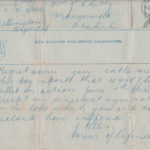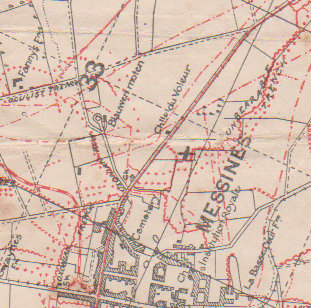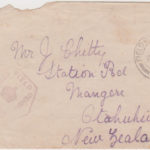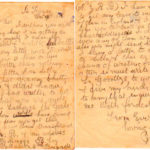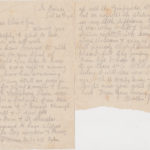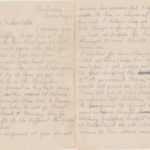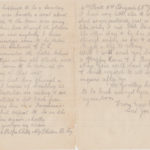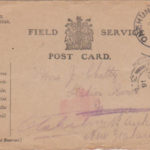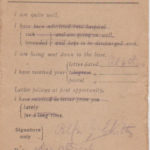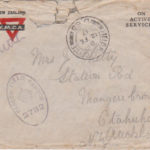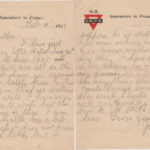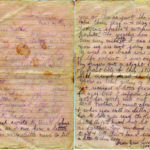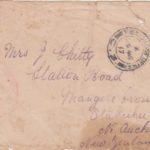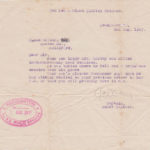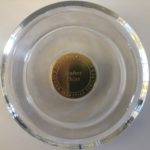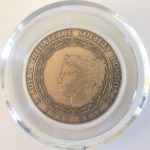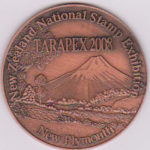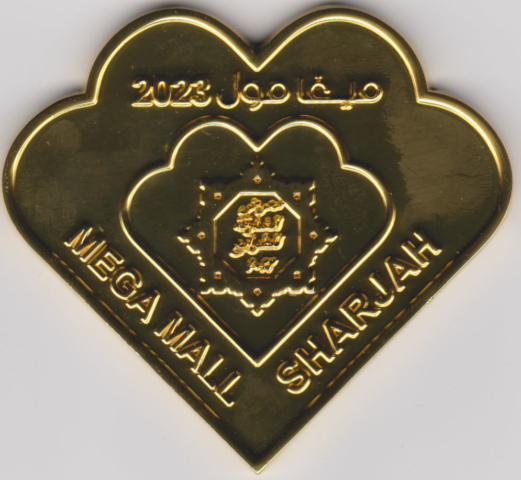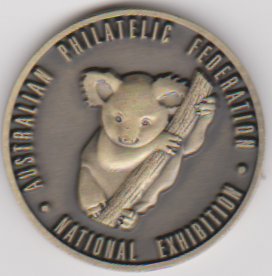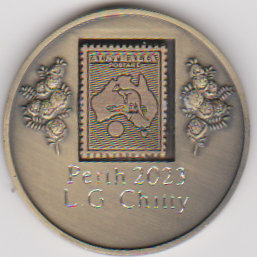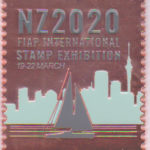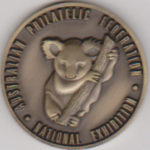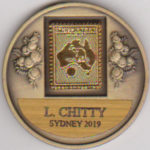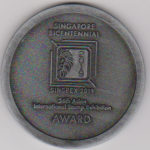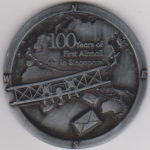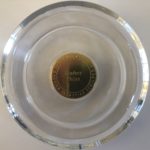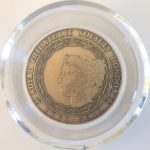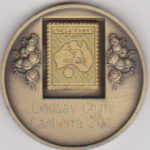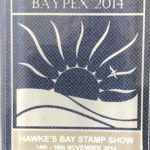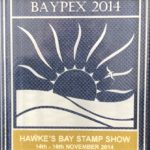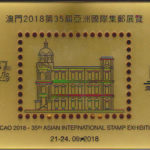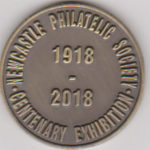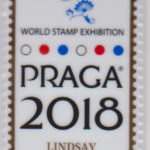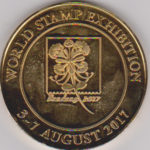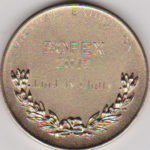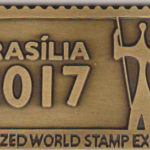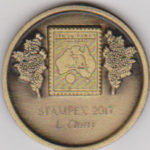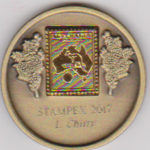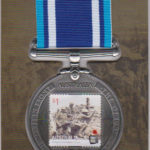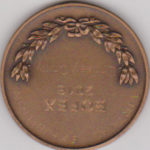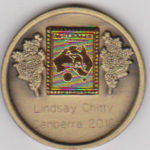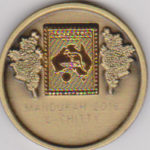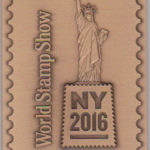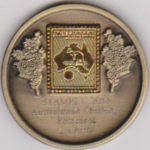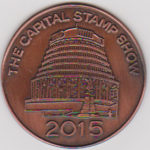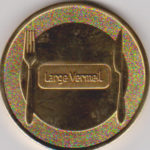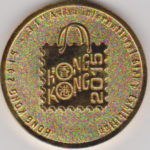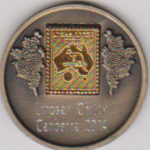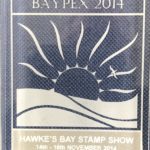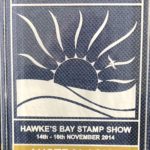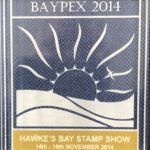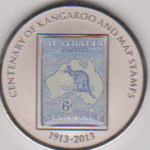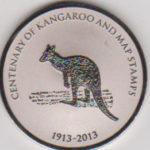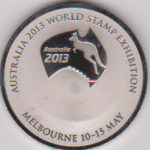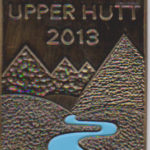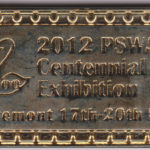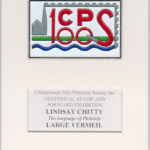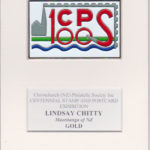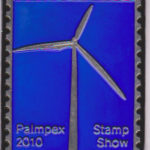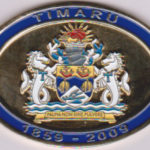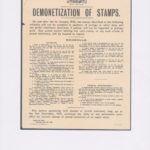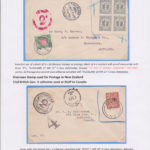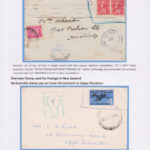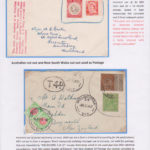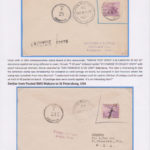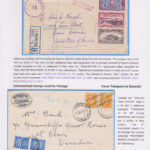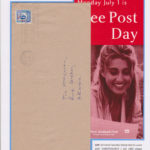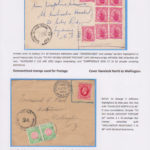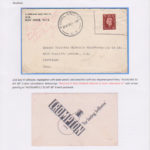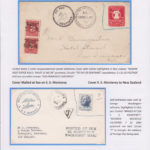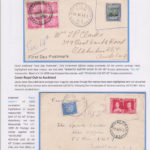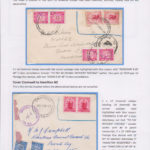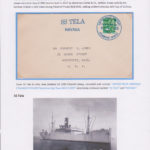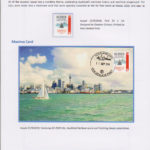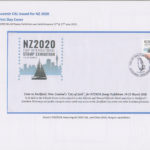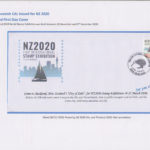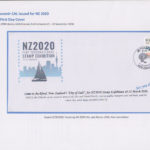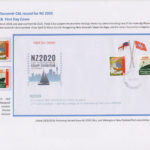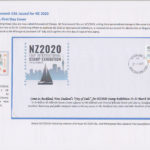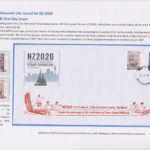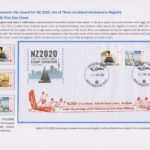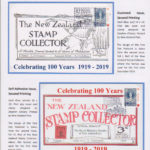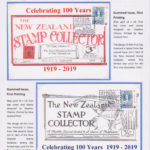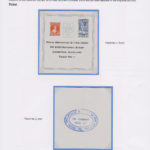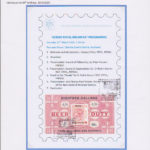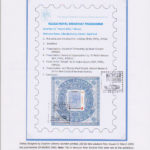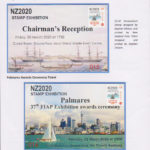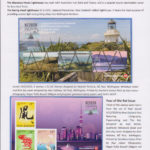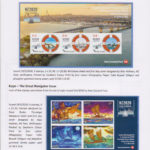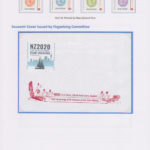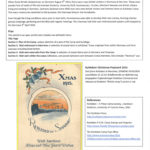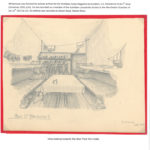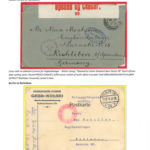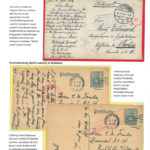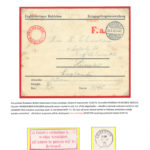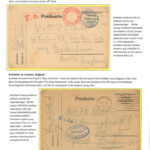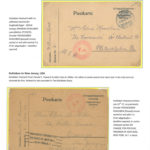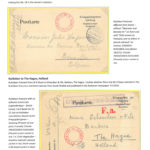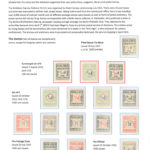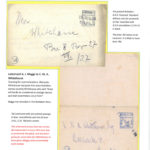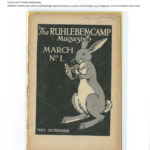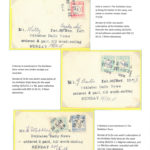The American Great White Fleet Voyage 1908-09
Introduction
The Great White Fleet was the popular nickname for the powerful Naval battle fleet that completed a journey around the globe from 16 December 1907, to 22 February 1909, by order of United States President Theodore Roosevelt. Its mission was to make friendly courtesy visits to numerous countries, while displaying America’s new naval power to the world.
Since Japan had arisen as a major sea power with the 1905 annihilation of the Russian fleet at Tsushima, the deployment of the Great White Fleet was therefore intended, at least in part, to send a message to Tokyo that the American fleet could be deployed anywhere, even from its Atlantic ports, and would be able to defend American interests in the Philippines and the Pacific.
My interest in The Great White Fleet started because it has a connection with my family. My Great Grandfather, Campbell Johnstone, and his three brothers were a tug-of-war team. The Great White Fleet had a tug of war team which had not been defeated until it met the Johnstone Brothers. The four brothers were very large men, solidly built, and tall with it.
Awards
Sharjah 2023: 85 points, Large Vermeil
Frame 1
Frame 2
Frame 3
Frame 4
Frame 5
Correspondence and Photographs Stalag VIIIB, WWII
My interest in Stalag VIIIB, German Prisoner of War Camp, started with the fact that many New Zealand POWs ended up here, including some friends of my family.
Stalag VIII-B Lamsdorf was a German Army prisoner of war camp, later renumbered Stalag-344, located near the small town of Lamsdorf (now called Łambinowice) in Silesia. The camp initially occupied barracks built to house British and French prisoners in World War I. At this same location there had been a prisoner camp during the Franco-Prussian War of 1870-71.
It was opened in 1939 to house Polish prisoners from the German September 1939 offensive. Later approximately 100,000 prisoners from Australia, Belgium, British India, British Palestine, Canada, France, Greece, Italy, the Netherlands, New Zealand, Poland, South Africa, the Soviet Union, the United Kingdom, the Isle of Man, the United States and Yugoslavia passed through this camp. In 1941 a separate camp, Stalag VIII-F was set up close by to house the Soviet prisoners.
In 1943, the Lamsdorf camp was split up, and many of the prisoners (and Arbeitskommando) were transferred to two new base camps Stalag VIII-C Sagan (modern Żagan and Stalag VIII-D Teschen (modern Český Těšín). The base camp at Lamsdorf was renumbered Stalag 344.
The Soviet Army reached the camp on 17 March 1945.
Later the Lamsdorf camp was used by the Soviets to house Germans, both prisoners of war and civilians. Polish army personnel being repatriated from POW camps were also processed through Lamsdorf and sometimes held there as prisoners for several months. Some were later released, others sent to Gulags in Siberia
Cover to meet “Gripsholm”
When the USA entered WWII after the bombing of Pearl Harbour, WWII, there was a need to repatriate diplomats, civilians caught in the Far East at the wrong time, and sick and wounded prisoners of war. The USA sent a message 8th December 1941 to the US Charge d’Affaires in Berne, Switzerland to start negotiations through their Tokyo Embassy. The result of this was that the M. V. Gripsholm (a vessel from neutral Sweden) was chartered by the USA for transfers of prisoners, mail and supplies. It was agreed that the first exchange would be at the neutral port of Lorenço Marques, Portuguese Mozambique.
The Japanese had two exchange vessels. The M. V. Asama Maru left Yokohama with 416 repatriates, picking others up at Hong Kong and Saigon. The Conte Verde left Shanghai with 640 repatriates and picked others up at Singapore.
This cover was purchased in a lot of three, on E-bay. With the COVID-19 lock-down and disruption of international postage, the item was sent March 18th from the USA, with a transit time of 9 weeks.
This cover is addressed to Wilhelmina Kuyf who was a passenger with the first Diplomatic Exchange voyage leaving Lourenco Marques July 28th 1942 arriving New York August 25 1942. The passenger manifest lists her as United States Citizen. Her passport was issued Tientsin, China March 21 1941, recorded as a female aged 41.
Her address was recorded as 626 W. Allegheny Ave Philadelphia, Pennsylvania, USA, the return address given on the cover.
The cover has a 3c USA adhesive with “PHILADELPHIA PA AUG 16 1942” slogan cancellation; Cover opened by Customs and resealed with brown tape; Purple boxed cachet “PORT of “NY” AUG 19 1942 Examined and passed “152” U.S. Customs Officer”.
Exhibiting Classes
Introduction
This is by no means an extensive explanation on the different classes of collecting and exhibiting, but is a help to those starting.
Traditional
Traditional philately is mostly about the study of postage stamps. Traditional Philately has the broadest scope of all the exhibiting categories, allowing all aspects of philately to be included in one form or another. However, the focus remains the postage stamps, and all other aspects should support the basic story of the postage stamps in some way.
Check the following link:
Postal History
Postal History is mostly about the routes, rates and marcophily associated with delivery of mail. Marcophily is the specialized study and collection of postmarks, cancellations and postal markings applied by hand or machine on mail that passes through a postal system.
Check the following link:
Postal Stationery
Postal stationery is a postal item such as a stamped envelope, letter sheet, post card lettercard, aerogramme or wrapper with an imprinted stamp on it indicating prepayment of postage. In other words, they are large stamps.
Check the following link:
Youth
This is the class that encourages youth in philately. There are three classes for youth, and these are dependent on age:
- Age Class “A” – 10 – 15 years (1 to 3 frames)
- Age Class “B” – 16 -18 years (2 to 4 frames)
- Age Class “C” – 19 – 21 years (3 to 5 frames)
New Zealand has a Youth Council and the following link to the website is full of interesting material. There are Youth Groups in Auckland, Wellington and Christchurch.
Aerophilately
Airmail as a collecting area is about aviation history and the impact on communication that aeroplanes and other aerial machines have on the delivery of mail.
Check the following link:
Thematics
Thematic Philately is collecting stamps and other philatelic items that illustrate a theme. Thematic Philately is dynamic in that it allows for continuous improvement.
Check the following link:
Open Class
Open Class is a relatively new class. It broadens the range of philately in that it allows philatelists to include objects from other collecting fields in support of the philatelic material shown. Philatelic material must be at least 50%.
Check the following link:
Picture Postcards
Picture Postcards is the class that is growing in popularity for a number of reasons. They provide a social historical aspect which is of great interest to the general public, and they are relatively inexpensive.
The following two links provide more details.
Frugal
The Frugal Philately class is not an FIP class. The value of the exhibit at the time of exhibition should not be more than NZ$250.00 per frame.
One Frame
A One frame exhibit is about a subject that is restricted in scope that it can best be exhibited in one frame only. It is often the way that a beginner to exhibiting can put something together with a minimum of cost compared to multi-frame exhibits.
Check the following link.
Anzac Day – A Special Day for our Family
Joseph Chitty
Introduction
Joseph Chitty, my Grandfather served in WWI and was killed at the battle of Messines, Belgium 17th June 1917. He left behind a wife, Lila, and three young boys; Gilbert (5 years old) , Geoffrey my father (3 years old), and Clarence (1 year old).
I am fortunate that my Uncle Gilbert gave me the only remaining correspondence relating to Joseph Chitty that was sent to his father Jessie Chitty and other relevant correspondence relating to his death because I had taken a great interest in this. Letters home to his wife (my Grandmother) had been lost in a house fire after the end of the war.
Imagine receiving telegrams like any one of these!
A little bit about Joseph’s background
Joseph Chitty. Rfn, 10998. 4th Bn 3rd (Rifle) Brigade.
Born 23/3/1890 at Lockner farm, Chilworth, near Guildford, South London. The farm was leasehold and the tenants were Joseph’s parents, Jesse Chitty and his wife. Jesse was born in India, his father Tom being in the Indian Army. Lockner was a grazing property and had stables. The property is still in its original state, although the stream running through it is no longer navigable as it was during the First World War. A gunpowder factory was located here and the gunpowder shipped out by barge.
Joseph’s parents came to New Zealand and lived in Manurewa. Joseph married Lilla Jane Monrath Johnstone 3/6/1911, and they had three sons. They lived in Hawera, Whangarei and Hamilton. Geoffrey Marion Chitty and Gilbert Lloyd Chitty were born in Hawera. Clarence Joseph Jack Chitty was born in Whangarei.
Joseph enlisted in the First World War and was sent to France. He served in the Battle of the Somme and on 4th October 1916 joined B Company, and Platoon Commander B. Mollison’s platoon at Messines, Belgium. He died in action on 7th June 1917 at Messines. In a letter to Joseph Chitty’s father, B. Mollison in a testimonial to Joseph’s bravery, made the following comments.
“On the 4th July 1916 he joined B Company and was posted to my platoon and I very soon sorted him out as a likely man and he very early proved his worth Joseph Chitty and became one of my best scouts. His first real chance arrived when the platoon had to make a raid on the Hun lines; as you probably know. Sergeant McConachie and he did all the scouting and on the night of the raids these two ensured the success of the stunt by the daring way they went about their job of clearing dugouts full of Huns and they did not take prisoners but bombed everyone they came across. For this act I recommended him for a decoration and also the Sergeant who got the DCM but I do not know why he did not get one, but you can believe me that if the one deserved the DCM, the other did also, because they worked together and did the same work.
Later on I again submitted his name for decoration for the same act and for good work as a scout, but with no better results. Now things were quiet until our last stunt at Messines and in this attack he simply outshone everyone in the Battalion; on the way over the infantry was held up in one sector by machine gun fire, when Joe worked his way round to the rear of the emplacement and captured the gun and crew, but as our job was further on he handed them on to other N Z troops and carried on with his own job and collected about 30 prisoners in all before reaching our own objective. After the men were all set to work consolidating our position Joe and I explored all dugouts in the vicinity to make sure there were no more Huns about. We were fairly short of tools so your boy went into Messines several times under heavy shell fire to try to find some shovels and sandbags. During one of his trips he found a bucket of good water and some dry tea, and he evidently got to work, because you can imagine our surprise when he arrived with hot tea for the Platoon.
After all our work was finished and we had settled down for a well deserved rest, a Hun 5.9 shell landed into our trench and your poor son got the full force of it and was killed instantly and was buried close by his own section and a wooden cross was erected over his grave at map reference Ploegsteert 28.S.W.4.33a8-1. I enclose a small map with a mark approximately the location of his grave. It will probably be a relief to you to know that ever since being in the Company I have never since seen such a gloom pass over any body of men as did the news of the death of Joe Chitty.”
Click left image for the full map enclosed with the letter.
Gillian and I have been to Belgium twice to connect with this family tragedy. On the first occasion, we arrived at Messines and called at the Public Relations Office. A very helpful man, who hardly spoke a word of English, looked at the map for a long time and said I can take you to the exact place where Joseph was buried. The reason he took such a long time was that Messines had been obliterated by the war, and even the Cathedral has been rebuilt on a different site. The only standing structure that he could recognize was the “Chapel du Voleur” (Chapel of the Thief) which survived the war, and was on the opposite side of the road to where Joseph was buried. This is now a paddock with cattle grazing. The Chapel is a small Roman Catholic Chapel which are common throughout Europe containing effigies and religious items.
Other Correspondence
The following additional items of correspondence are displayed:
We Now Know a Bit More
Since the WWI Veteran’s details have been made available on-line, we now have a hint why the DCM wasn’t awarded to Joseph!
Like many brave people, discipline was sometimes an issue, and Joseph was no exception. He once had his pay docked for “playing games of chance”, and on more than one occasion for being “absent without leave”. The last incident was just prior to him being killed, and after he was killed the penalty rescinded.
Medals and Prizes
Introduction
Over the years I have been fortunate to receive the following medals and prizes associated with exhibiting.
Stockhomia 2019
My most prized medal is the one from Stockholmia 2019, celebrating 150 years of the Royal Philatelic Society London, for my exhibit on Prisoner of War Correspondence, Japanese occupation of the Far East 1942-45 where the exhibits were judged at International standard, and I received Large Gold with 95 points
Paul Harris Medal
This was awarded to me by the Rotary Club of Otorohanga for service to Rotary, 17/6/2004
My First Medal
Tarapex 2008 Exhibition at New Plymouth
The language of Philately – Large Silver
2023
Sharjah Stamp Exhibition 2023
The American Great White Fleet Voyage of 1907 – 9
Perth 2023 National Exhibition
Early Railway Picture Postcards of New Zealand
Thailand World Stamp Championship 2023
2020
NZ 2020 Exhibition at Auckland
Prisoner of War Correspondence Japanese Occupation of the Far East, WWII 1942 – 45, Large Gold 94 points. Special Prize
The New Zealand First Pictorial Issue 1898, Gold 85 points
2019
China 2019 World Stamp Exhibition, Wuhan
British Commonwealth Prisoner of War Repatriation Mail Japanese Occupation of the Far East, WWII 1942 – 46, Large Vermeil 87 points
Sydney Stamp & Coin Expo 2019
The Maoritanga of New Zealand, Large Gold 91 points
Picture Postcards of the King Country, New Zealand, Gold 86 points
Stockholmia 2019
Prisoner of War Correspondence Japanese Occupation of the Far East, WWII 1942 – 45, Large Gold 95 points
Singpex 2019 Asian International Exhibition
New Zealand Prisoner of War Aerogrammes and Postcards 1941-1945, Large Vermeil 86 Points
The New Zealand 1½d Boer War Contingent Stamp and Postal Use, Large Vermeil 88 Points
2018
Macau 2018 Asian International Stamp Exhibition
The New Zealand First Pictorial Issue of 1898 – Large Vermeil, 88 points
Praga 2018 World Stamp Exhibition
The New Zealand First Pictorial Issue – Large Vermeil, 87 points
The Armistice Dunedin Stamp Show 2018
Civilian Internee Mail, Japanese Occupation of the Far East WWII, 1942 -45 – Large Vermeil, 84 points
Methods of Officially Sealing Mail in New Zealand – Large Vermeil, 83 points
Postal Use of the Pre-decimal Arms Type Stamps – Vermeil, 78 points
Savpex 2018, South Africa Virtual Philatelic Exhibition
The New Zealand 1½ Boer War Contingent Stamp Postal Use – 83 points
Canberra Stampshow 2018
New Zealand’s First Stamp Issue: The Full Face Queens – Large Vermeil. 84 points
Newcastle Philatelic Society Centennial Exhibition 2018
Methods of Officially Sealing Mail in New Zealand – Large Vermeil, 83 points
2017
Bandung 2017 World Stamp Exhibition
Prisoner Of War Correspondence Japanese Occupation of the Far East, WWII 1942 – 45 – Gold, 92 points
Melbourne 2017 FIAP Stamp and Coin Show
The New Zealand First Pictorial Issue 1898 – Large Vermeil
Prisoner Of War Correspondence Japanese Occupation of the Far East, WWII 1942 – 45 – Large Vermeil
Stampex Adelaide 2017
Australian Prisoner of War Postal History to and from the Far East WWII – Large Vermeil, 84 points
The New Zealand 1½d Boer War Contingent Stamp and Postal Use – Large Gold, 93 points. Best in Show One Frame
Postcards relating to the Ruhleben Civil Internee Camp WWI Germany – Gold, 89 points
New Zealand Prisoner of War Aerogrammes and Postcards 1941 -1945 – Large Gold 90 points
The Ruhleben Civilian Internee Camp WWI – Large Vermeil, 84 points
Brasilia 2017 World Stamp Exhibition
The New Zealand First Pictorial Issue 1898 – Large Vermeil 88 points
Royalpex 2017 Stamp Show (New Zealand)
The New Zealand First Pictorial Issue 1898 – Large Vermeil, 83 points
Bofex Hobby Expo 2017
New Zealand Prisoner of War Air Letter Cards 1941 – 1945 – 83 points
Prisoner Of War Correspondence Japanese Occupation of the Far East, WWII 1942 – 45 – Large Gold, 90 points
2016
Philataipei 2016 World Stamp Exhibition
Prisoner Of War Correspondence Japanese Occupation of the Far East, WWII 1942 – 45 – Gold, 90
Christchurch 2016 Stamp & Postcard Exhibition
The New Zealand First Pictorial Issue 1898 – Large Gold, 90 points
Thailand 2016 Asian International Stamp Exhibition
New Zealand’s First Stamp Issue, the Full Face Queens – Large Vermeil
Bofex 2016
The Ruhleben Civil Internee Camp of WWI – 85 points
China 2016, Asia International Stamp Exhibition
British Commonwealth Prisoner of War Repatriation Mail, Japanese Occupation of the Far East WWII 1942 – 46 – Large Vermeil. With Felicitations
Mandurah 2016 Fair
New Zealand’s First Stamp Issue, The Full Face Queens – Gold, 87 points
Canberra National 2016
Prisoner Of War Correspondence Japanese Occupation of the Far East, WWII 1942 – 45 – Large Gold, 93 points. Special Prize for Best in Postal History
Maoritatanga of new Zealand: The Culture of a Proud Race – Gold, 88 points. Special Prize for Best in Open Class
New York 2016
Prisoner Of War Correspondence Japanese Occupation of the Far East, WWII 1942 – 45 – Large Vermeil, 88 points
Stampex 2016
Prisoner Of War Correspondence Japanese Occupation of the Far East, WWII 1942 – 45 – Large Gold, 92 points
Postcards Relating to the Ruhleben Civil Internee Camp WWI Germany – Gold, 86 points
2015
Hong Kong 2015
British Commonwealth Repatriation Mail Japanese Occupation of the Far East WWII – Large Vermeil
Capital Stamp Show 2015
Prisoner of War Correspondence Japanese Occupation of the Far East, WWII 1942 – 45 – Large Gold points. Special Prize for Best in Postal History
Repatriation Mail Japanese Occupation of the Far East WWII – Gold, 88 points
Postcards Sent from the Ruhleben Civil Internee Camp, WWI, Germany – Large Vermeil, 81 points
Civilian Internee Mail Japanese Occupation of the Far East 1942 – 45 – Large Silver, 74 points
Singapore 2015 World Stamp Exhibition
The Ruhleben Civil Internee Camp of WWI – 80 points
Taipei 2015
British Commonwealth POW Correspondence Japanese Occupation of the Far East, WWII 1942 – 45 – Large Vermeil, 88 points. Special Prize
2014
Canberra Stamp Show 2014
This was the first occasion that I entered 5 frames of each of the below two exhibits anywhere. I was amazed, not only to get two Large Golds first time up, but to get two of the major prizes of the exhibition.
British Commonwealth POW Repatriation Mail Japanese Occupation of the Far East, WWII 1944 – 45 – Large Gold, 90 points. Special Prize, Best First Exhibit
British Commonwealth POW Correspondence Japanese Occupation of the Far East, WWII 1942 – 45 – Large Gold, 92 points. Special Prize, Best Exhibit in Military Challenge
Baypex 2014 Stamp Show, Napier
The New Zealand First Stamp Issue, The Full Face Queens – Vermeil, 79 points
Postcards Sent From and Within the Ruhleben Civil Internee Camp of WWI, Germany – Vermeil, 78 points
The Ruhleben Civil Internee Camp of WWI, Germany – Large Gold, 91 points
British Commonwealth POW Repatriation Mail Japanese Occupation of the Far East, WWII 1944 – 45 – Large Gold, 93 points. Special Prize
2013
Upper Hutt 2013
New Zealand 2d Blue Full Face Queens and Forgeries – Vermeil, 77 points
Ruhleben Civilian Internee Camp of World War 1 – Gold, 87 points. With Felicitations
Australia 2013 FIP World Philatelic Exhibition
The Language of Philately using New Zealand Stamps & Postal History – Silver
2012
Christchurch Centennial Stamp and Postcard Exhibition
Maoritanga of New Zealand – The Culture of a Proud Race – Gold, 85 points
The Language of Philately Using New Zealand Stamps and Postal History – Large Vermeil, 84 points
PSWA 2012 Centennial Exhibition
Maoritanga of New Zealand – The Culture of a Proud Race – Large Vermeil, 81 points
Blenpex 2012
Maoritanga of New Zealand – The Culture of a Proud Race – Large Gold, 90 points
The Language of Philately through New Zealand Stamps & Postal History – Large Vermeil, 81 points
2010
Canberra Stampshow
The A to Z of New Zealand Examples of Philatelic Terms – Large Silver, 73 points
Palmpex Stamp Show
The Language of Philately: The Alphabetelately of new Zealand Stamps and Postal History – Large Vermeil, 84 points
2009
Timpex 2009 Exhibition at Timaru
The A to Z of new Zealand Examples of Philatelic Terms – Vermeil, 79 points
2008
Tarapex 2008 Exhibition at New Plymouth
The language of Philately – Large Silver, 73 points
New Zealand Irregularly Posted
This is a collecting interest that I am working on at present. It is about postage stamps and labels being used irregularly, and not being accepted for prepaid postage. It includes such items as demonetized stamps, labels, irregular use of official stamps,use of overseas stamps on New Zealand mail, New Zealand stamps being used at USA Antarctica station, and others.
Any collector who has items that fall into this category, I am interested in seeing scans of these for a potential publication. e-mail at lindsay.chitty@xtra.co.nz
The NZ 2020 Stamp Exhibition
This exhibition was held at the Ellerslie Convention Centre, Auckland 19 – 22 March 2020. It was originally planned as an International FIAP Exhibition, but the Coronavirus pandemic prevented any overseas visitors including Exhibitors, Jury and Dealers from being there, unless they were already in the Country well before the exhibition.
As a result, the exhibition was declared a National Exhibition. However on Saturday 21st March, the Government moved to further restrict contact between people, and the Exhibition Committee had no choice but to close the exhibition shortly after midday.
I spite of all this, the exhibition was a great success with over 500 frames of competitive exhibits, and a great range of non-competitive displays filling the frames.
Link to the NZ 2020 web site: https://www.nz2020.nz/
The Ruhleben Civilian Internee Camp of WWI
Introduction
When Britain declared war on Germany at the beginning of WWI, they rounded up all the German men who happened to be in Britain at the time, interring them in a number of different camps. The Germans responded by interring all of the British and British Empire people who happened to be in Germany at the time in one camp at Ruhleben, on the road between Berlin and Spandau. This camp was made from a racecourse, and the prisoners lived in the horse boxes.
Exhibition Results
Stampex Adelaide 2017: 84 Points, Large Vermeil
Singapore 2015 World Stamp Exhibition: 80 Points
Baypex 2014: Large Gold
Upper Hutt 2013: Gold with Felicitations
